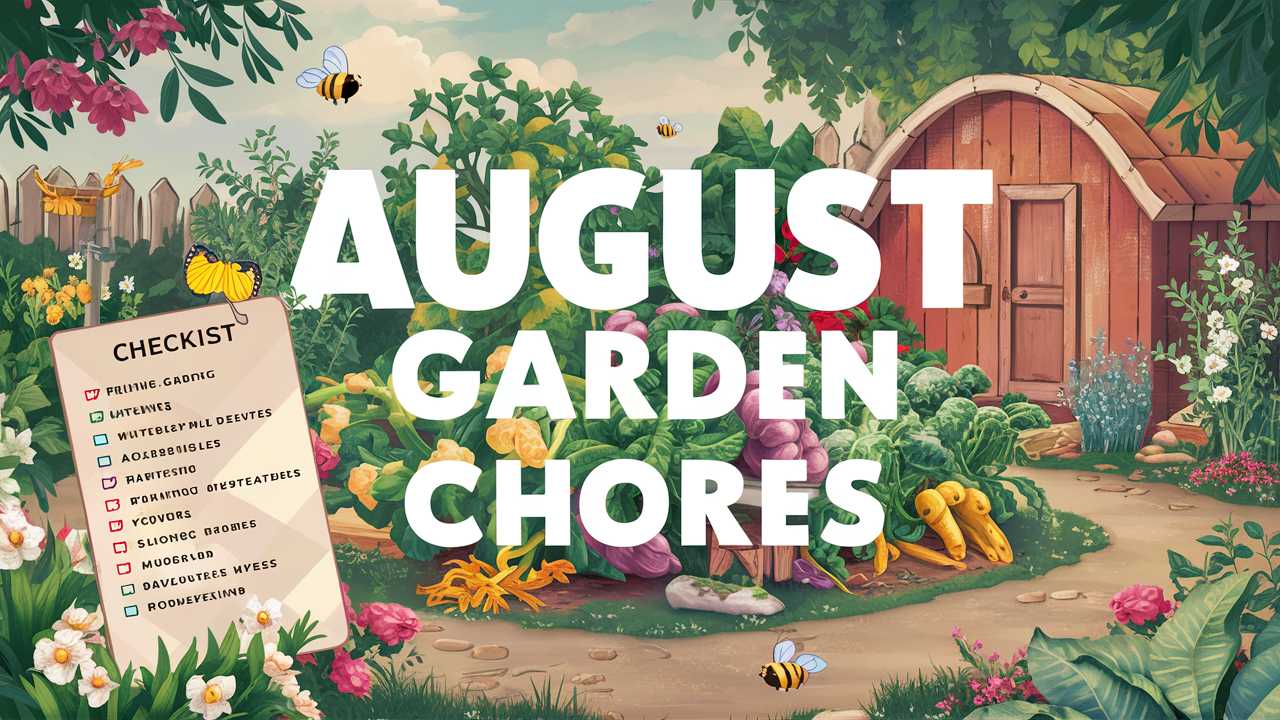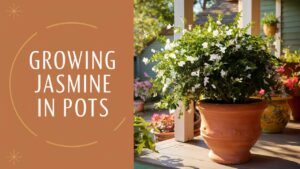As summer swings into full gear, the month of August presents a unique blend of challenges and opportunities for gardeners. The long days and warm temperatures mean your garden is likely flourishing, but with that growth comes a range of chores necessary to ensure your plants thrive through the late summer heat and transition smoothly into fall.
In this comprehensive guide, we’ll explore the essential tasks to focus on in your garden during August. Whether you’re tending to a large vegetable plot, a small flower bed, or container gardens, this month is crucial for planning, care, and preparation.
Watering Wisely: The Key to Plant Health
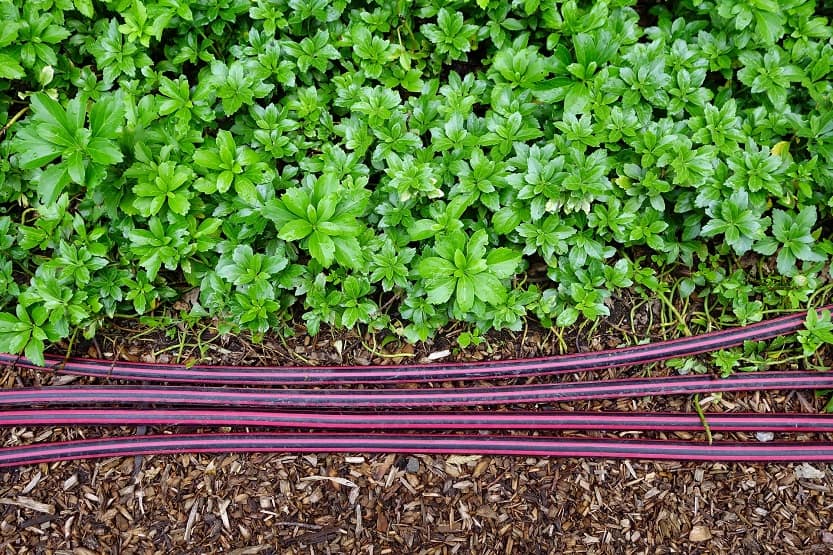
During August, heat and humidity can place significant stress on your garden. While it’s tempting to water your plants frequently, understanding the right techniques is vital. Water your plants deeply but less frequently, aiming for about one inch of water per week. Early mornings are ideal for watering, as this timing reduces evaporation and allows plants to absorb moisture effectively.
Consider investing in a soaker hose or drip irrigation system, which can help ensure that water penetrates deeply into the soil, reaching the roots directly and reducing waste. Additionally, pay attention to the moisture content of the soil by sticking your finger into the ground. If the top inch feels dry, it’s time to water.
Moreover, mulching around plants can help retain soil moisture and reduce water evaporation. Organic mulches, such as wood chips or straw, not only inhibit weed growth but also improve soil health as they decompose over time.
Harvesting Time: Enjoying the Fruits of Your Labor
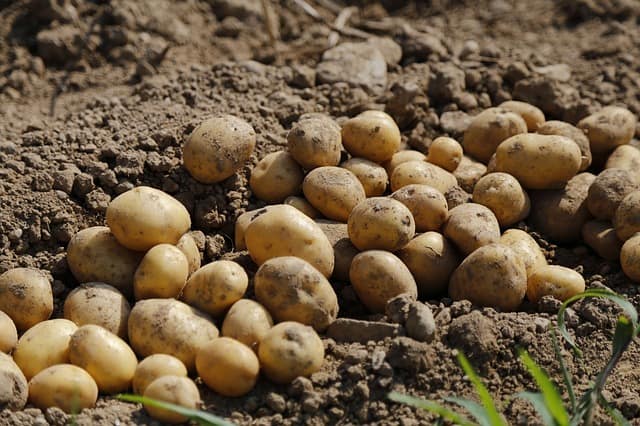
August is typically peak harvesting season for many garden crops, especially in temperate zones. It’s time to reap what you’ve sown! Regular harvesting not only provides you with fresh produce but also encourages plants to continue producing. Beans, tomatoes, peppers, cucumbers, and squash should be harvested frequently, as this will stimulate more growth.
In addition to standard harvesting practices, stay vigilant for plants that may appear overripe. Remove any fruits or vegetables that have surpassed their prime as they can attract pests and diseases. To make the most of your harvest, consider preserving excess produce by canning, freezing, or drying. This way, you can enjoy the fruits of your labor long after the summer ends.
Pest Management: Staying One Step Ahead
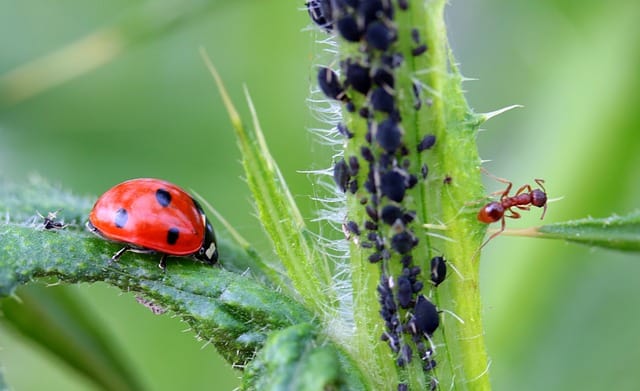
Pests can be a gardener’s worst enemy in August, with many insects thriving in warm weather. Regular inspections of your plants are essential to catch any infestations early. Look under leaves and around stems for signs of pests such as aphids, spider mites, or whiteflies.
Employ integrated pest management techniques, which might include introducing beneficial insects like ladybugs, using insecticidal soaps, or applying neem oil as a natural pesticide. Ensuring that your plants are healthy and stress-free can also go a long way in preventing pest problems.
Try to keep your garden area clean and well-maintained. Remove any dead or decaying plant matter, as this can attract unwanted pests and diseases. Crop rotation is another helpful practice to minimize pest and disease buildup in the soil.
Weeding: Keeping Your Garden Tidy
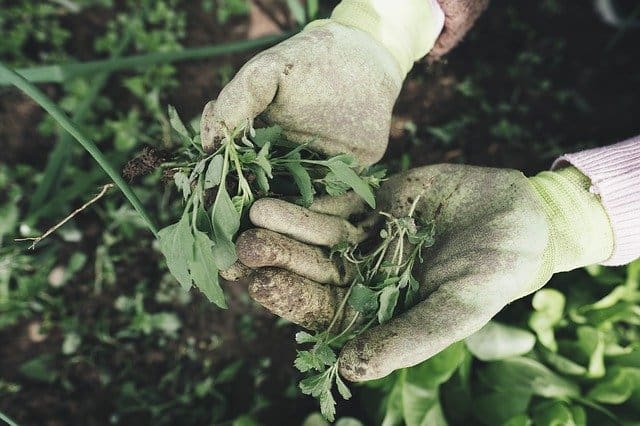
With warm weather, weeds tend to proliferate, competing for nutrients and water with your plants. Regularly weeding your garden is paramount to maintaining plant health. Ideally, weave this task into your routine rather than letting it pile up.
Pull weeds when they are small, as they are easier to remove and have not yet set seed. Employing mulch can significantly reduce weed growth by obstructing sunlight from reaching the soil. Additionally, consider using landscaping fabric in perennial beds for long-lasting weed suppression.
For deeply rooted weeds, consider employing a hoe to slice them below the soil line. Be cautious to avoid disturbing the roots of your desired plants in the process.
Fertilizing: Feeding Your Plants
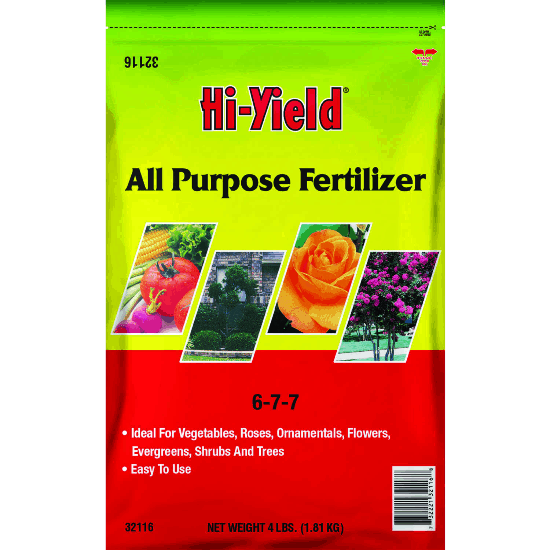
Plants often require extra nutrients during the peak growing season of August, particularly as they produce blooms and fruit. Analyze the nutrient needs of your garden and consider supplementing with organic fertilizers. Products such as compost, aged manure, or commercial organic fertilizers can provide a balanced diet for your plants.
When applying fertilizer, be careful to follow the instructions closely. Over-fertilization can lead to nutrient burn or damage to your plants. It’s also wise to test your soil periodically to gauge nutrient levels and pH balance, enabling more targeted fertilization strategies.
If you’re growing vegetables, consider switching to a fertilizers lower in nitrogen as they begin to set fruit, which can encourage better growth and development.
Preparing for Fall: Starting Seeds and Planting
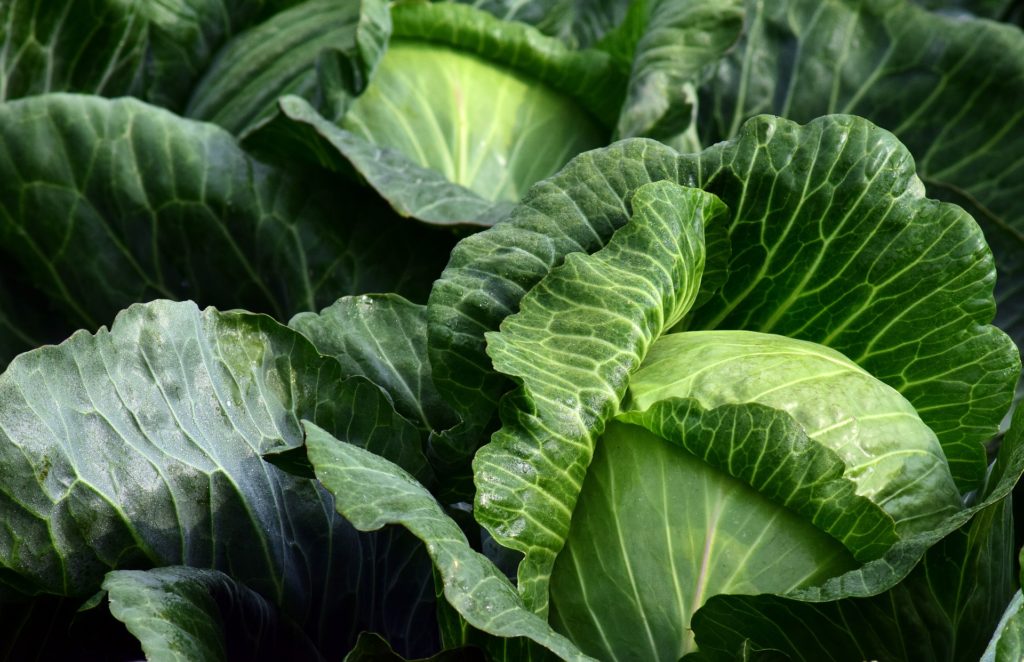
As August progresses, it’s a great time to think ahead to fall gardening. Many cool-season crops can be sown directly in the garden this month, including kale, spinach, beets, and turnips. Start these seeds in early August to ensure they have enough time to mature before the first frost.
If you’re growing perennials, August can also be the perfect time to divide and transplant them. Doing so can rejuvenate established plants, ensuring they continue performing well for years to come. Just make sure to water them well after transplanting to reduce transplant shock.
In addition to direct sowing, consider starting seeds indoors for plants that require longer growing seasons. This advanced planning gives you a jump on spring next year.
Fall Cleanup: Tidying Up After Summer
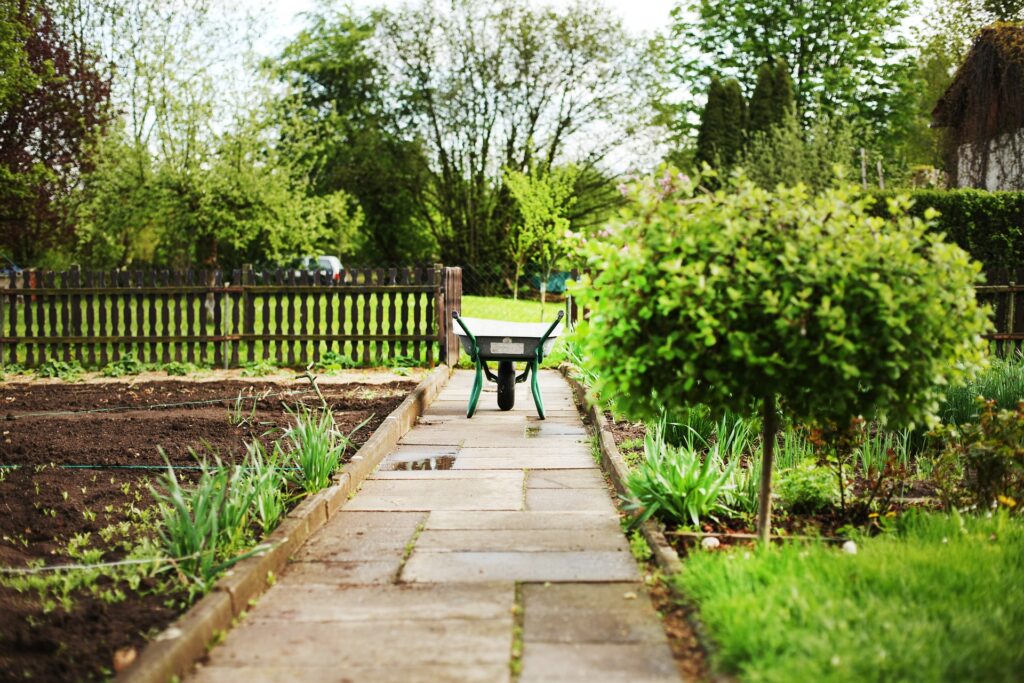
While August is still summer, it’s never too early to consider cleanup tasks that will lighten your workload come autumn. Begin by removing spent plants, especially those that may harbor diseases or pests. A clean garden bed reduces the risk of issues in subsequent growing seasons.
Consider planting a cover crop in areas that are no longer producing. Crops such as clover, vetch, or rye will enrich the soil and prevent erosion over the winter months. They also suppress weed growth, ensuring your beds are ready for spring planting.
Regularly collecting dropped fruits and vegetables can also prevent pest problems and keep your garden tidy.
Pruning and Deadheading: Encouraging New Growth

Pruning and deadheading are critical tasks during August, particularly for flowering plants and shrubs. Regular deadheading can encourage plants to produce more blooms, extending their flowering period. For many perennials, deadheading will promote bushier growth and overall stronger health.
When pruning, focus on removing any dead or diseased branches and shaping plants to encourage airflow. This practice minimizes the risk of fungal diseases and improves overall aesthetics. Be gentle, as excessive pruning can stress your plants.
For perennial herbs, trimming back to encourage new growth and increased production is often beneficial. However, timing is crucial; ensure you’re not pruning too late in the season, as this can impact winter hardiness.
Monitoring and Adjusting Soil Health
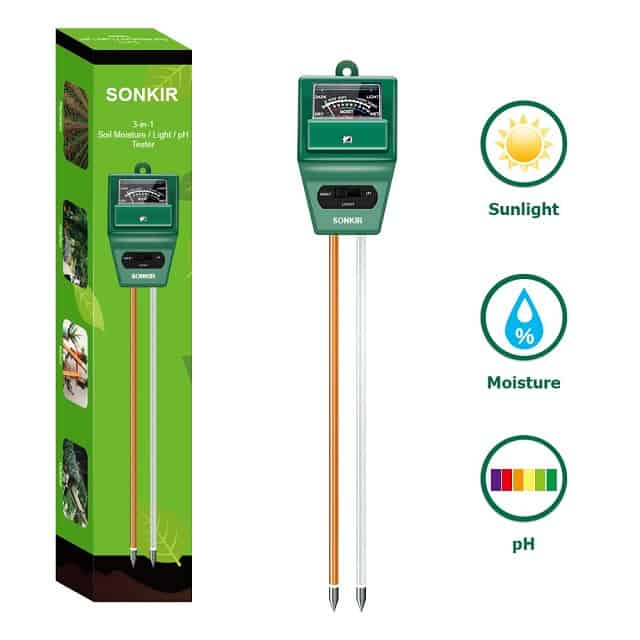
Soil health is the foundation of a flourishing garden, and August is an opportune time to assess and amend your soil. If you haven’t already, consider conducting a soil test to determine pH levels and nutrient content. This information will guide you in amending your soil appropriately.
Adding organic matter is a practice that benefits the soil tremendously. Incorporating compost or well-rotted manure enriches soil structure, increases moisture retention, and fosters beneficial microbial activity. If you notice that certain plants are thriving while others appear stressed, it may indicate a nutrient imbalance in the soil.
Also, consider mulching to improve soil health. Mulch serves multiple roles, including moisture retention, temperature moderation, and weed suppression. Over time, as mulch breaks down, it contributes organic matter back into the soil.
Engaging Your Community: Sharing the Bounty
Finally, August is a wonderful time to connect with fellow gardeners and share your gardening successes and challenges. Participating in local gardening clubs or online forums can add variety to your gardening experience. Not only can you exchange tips and tricks, but you can also band together to tackle larger gardening projects or community beautification efforts.
If you have an abundance of produce, consider sharing your harvest with neighbors, friends, or local food banks. Community gardens offer an excellent platform for sharing both crops and knowledge. Engaging with others not only fosters a sense of community but can also lead to valuable friendships and partnerships in gardening.
Conclusion: Celebrating Your Summer Successes
August is a busy month in the garden, filled with essential chores that will set your plants up for success as they head into fall. From expanding your watering skills to embracing community connections, each chore serves a purpose in nurturing your garden and enhancing your enjoyment.


